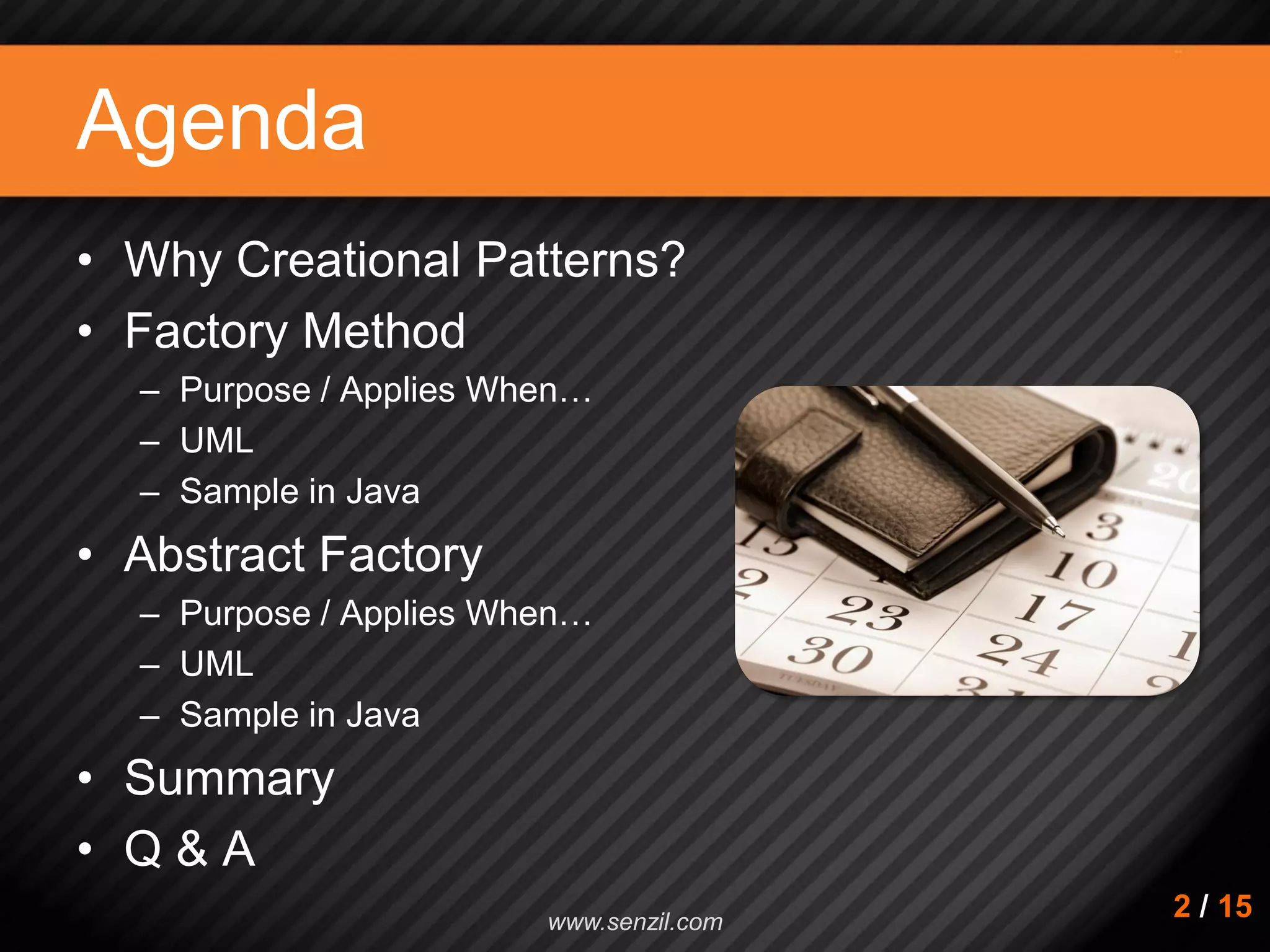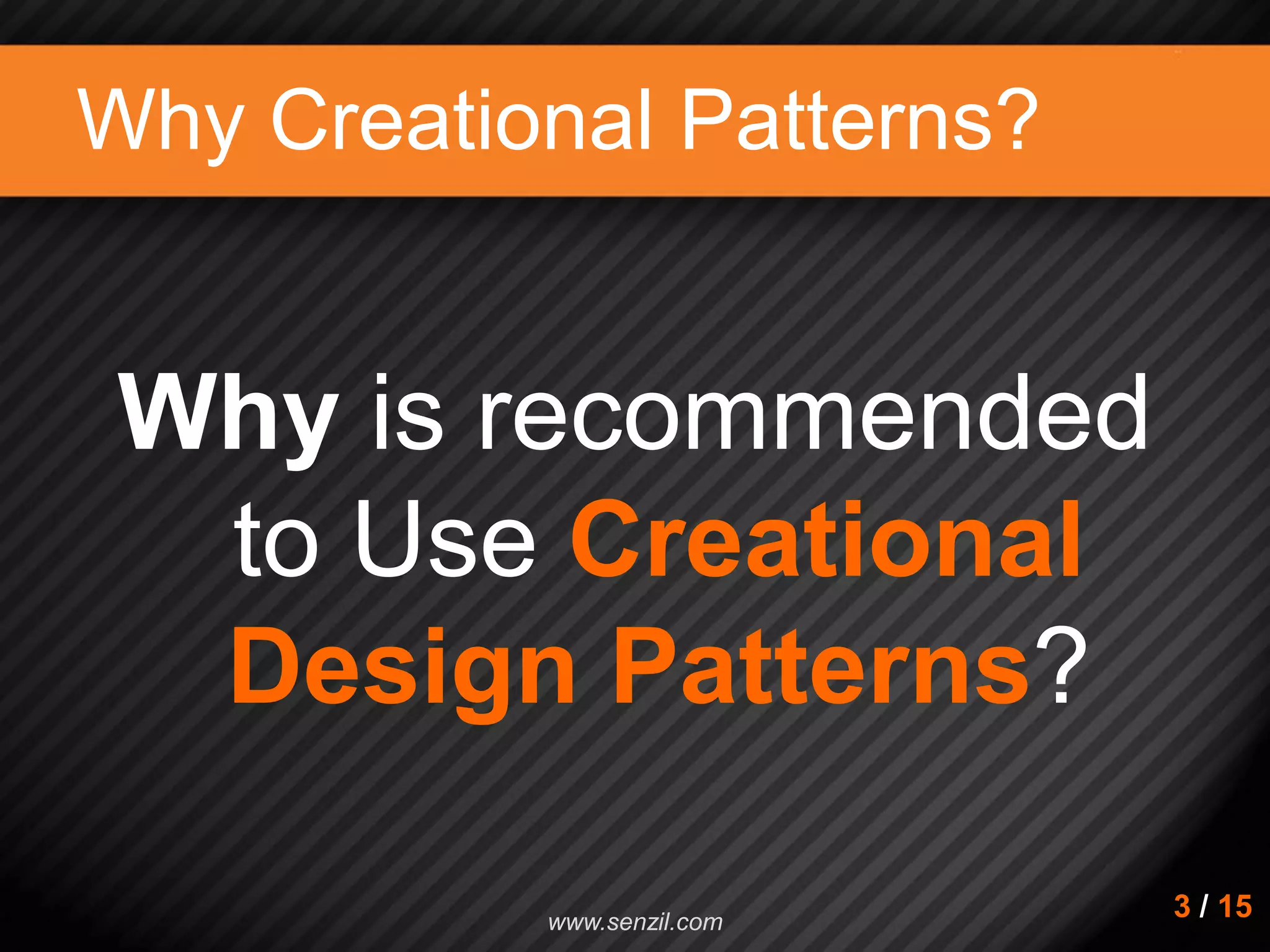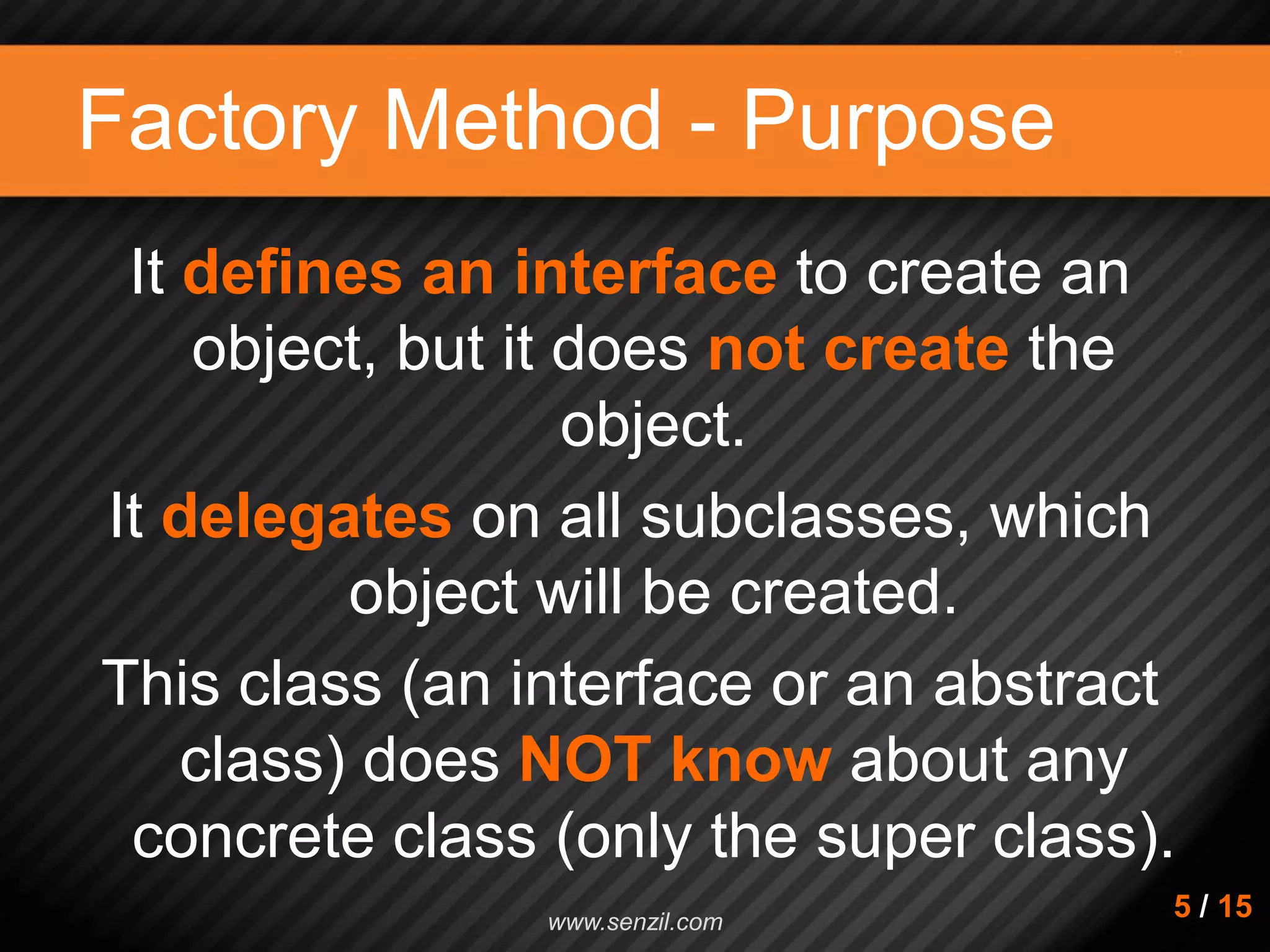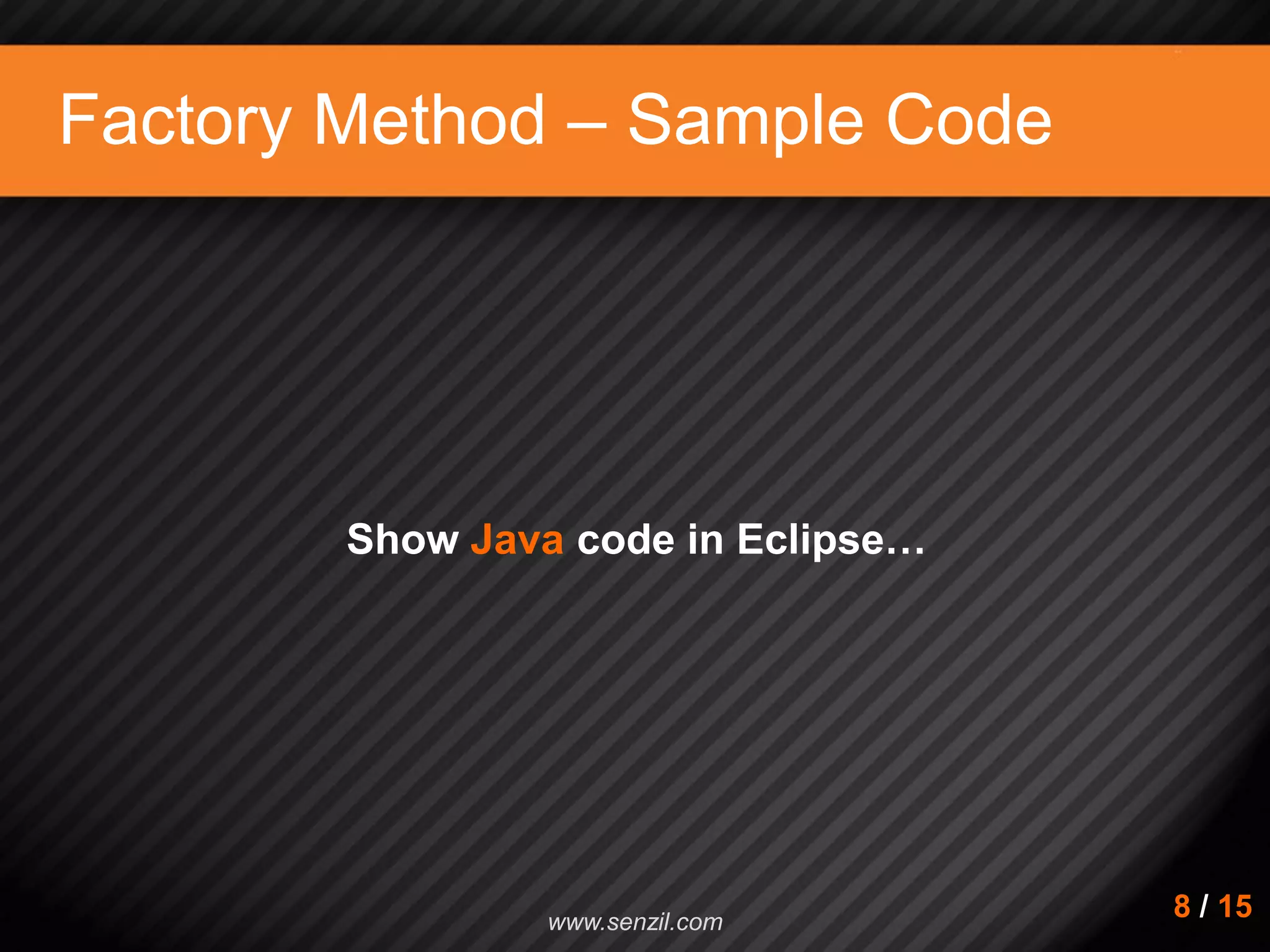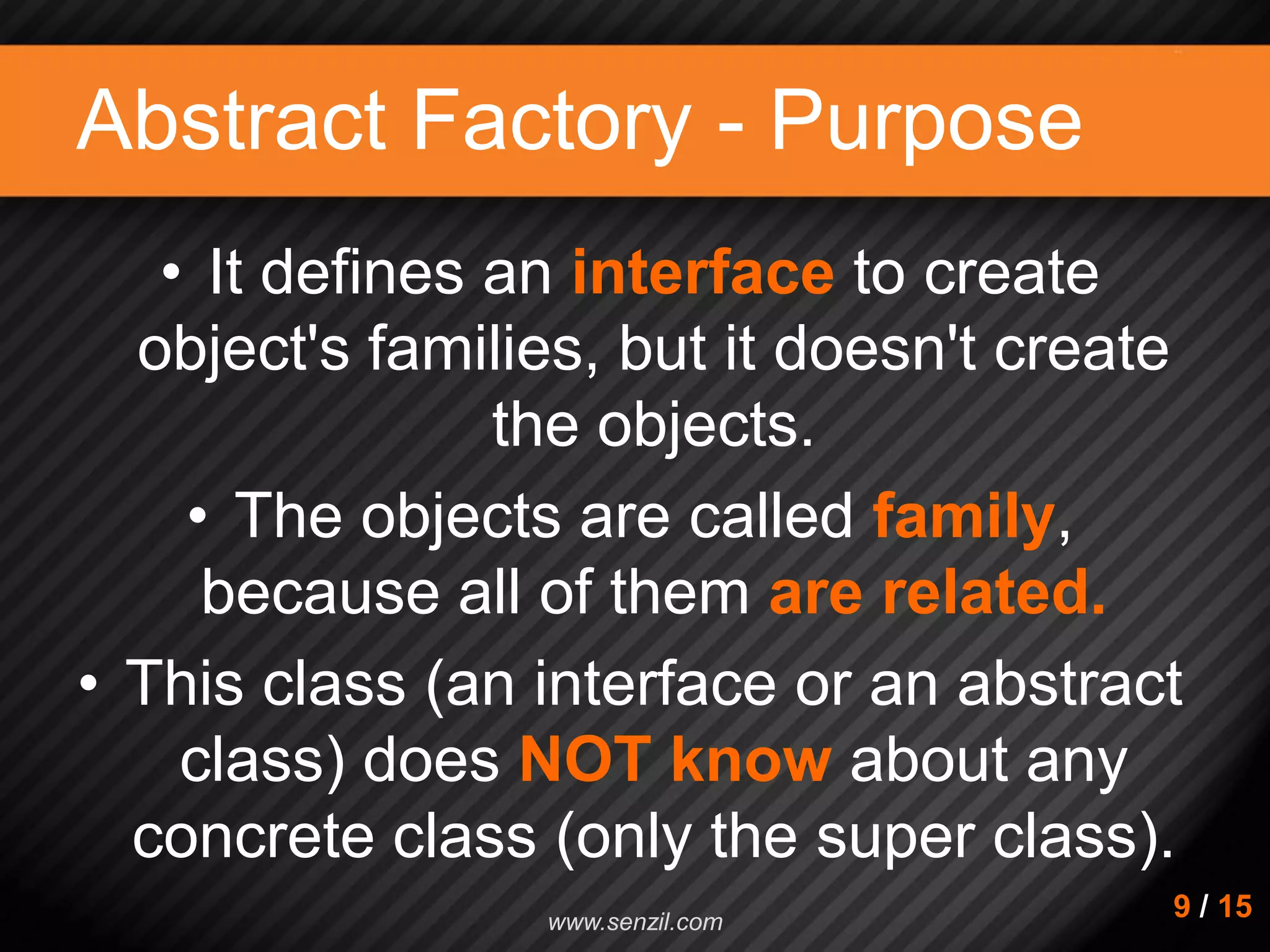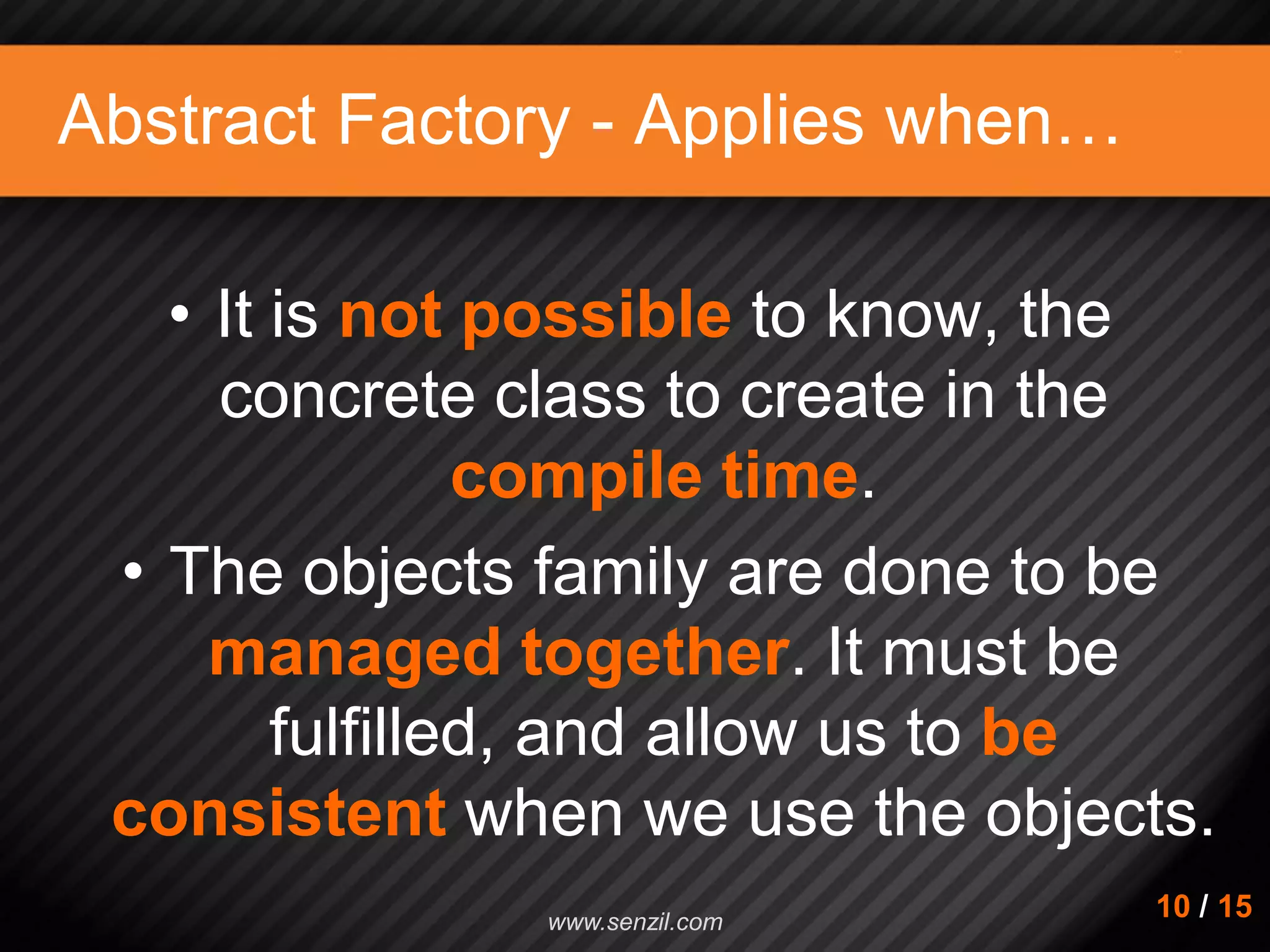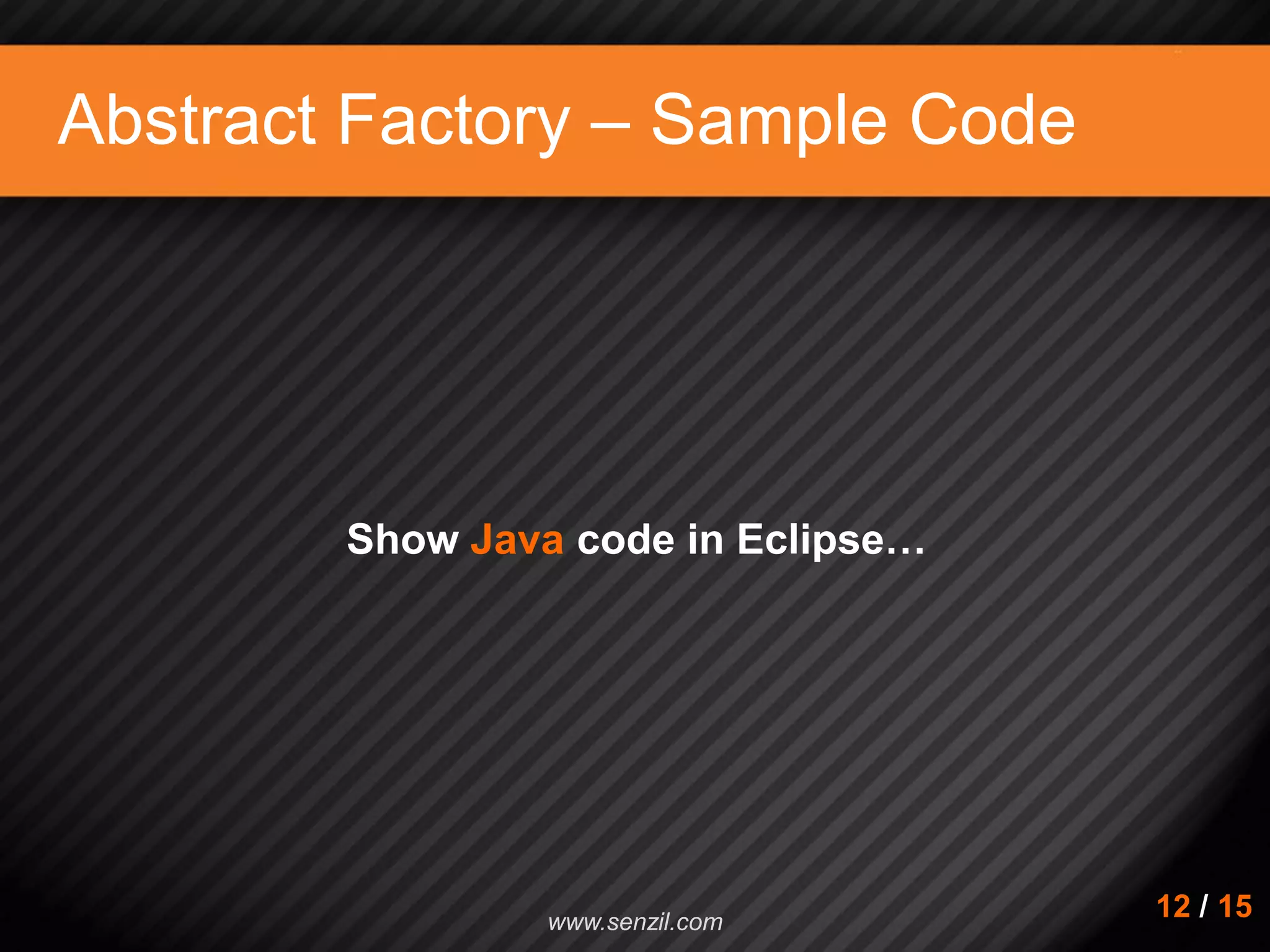The document discusses creational design patterns, specifically the Factory Method and Abstract Factory patterns, highlighting their purposes, applications, and advantages. It emphasizes the importance of abstraction in object creation and how these patterns facilitate flexible design and object management. The presentation includes UML diagrams and Java code samples to illustrate the concepts.

